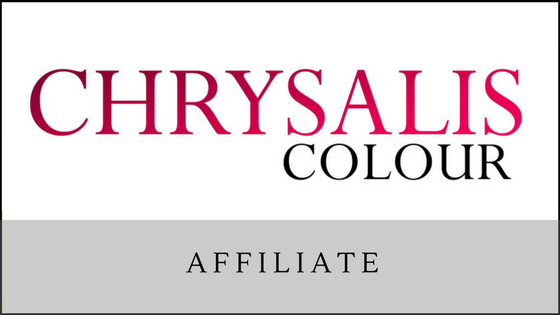In the last article about stereotypes, we learned why we shouldn’t prejudge a person’s seasonal tone. But trying to evaluate someone using their overtones is just as dangerous, even more so.
What exactly is an overtone? It is the coloring of a person’s outward appearance: skin, hair, and eyes made from each person’s unique levels of melanin (black, blue, brown) and carotene (yellow, orange, red). We make assumptions about coloring based on how cool or warm they look, or how light or dark. But is what we see what they really are?
Overtones are used in so many color analysis methods today. I read about them on the internet and hear about them from my clients. I’ve seen the color swatches the clients get. While some of the given colors may work for the client, many don’t. There are usually colors that don’t go with anything else within the palette making it difficult to create outfits. The colors just don’t harmonize with each other. People are disappointed because they spent a good amount of money for something they find difficult to work with and is limiting in wardrobe planning.
When we look at people, whether in person or in photos, it’s all too easy to assume a particular season based on what we see. What we forget is that their appearance may be altered by their hair, clothing, and cosmetic colors, which is why analyzing to overtones is harmful.
A skilled analyst MUST understand the science of color in order to interpret the drapes to determine your seasonal tone. The knowledge of contiguous colors and how they create simultaneous contrast is the most important aspect of color analysis draping. If your analyst can’t explain the principles of simultaneous contrast to you, I would seriously question the outcome.
In Kathryn Kalisz’s book, “Understanding Your Color,” she writes, “While it is important for the analyst to be trained and experienced, it is also important for the person being analyzed to know how and why the procedure works in order to have full confidence in the results.”
The main reason I am writing these articles is for you, the client.
To help you understand how overtones affect our perception of a person’s coloring, there is information you need to know about color and human vision. This is such an important subject that I want you to be familiar with these concepts so you can discern whether your analysis is being performed correctly.
Contiguous colors are any two colors that are next to each other: hair to skin, clothing to hair, clothing to skin, etc. We are almost always seeing contiguous colors which touch at the border, as we rarely ever have just one color in our field of vision.
Simultaneous Contrast is the effect that those contiguous colors have on human vision. One color acts as a color agent to produce a reaction, while the adjoining color supplies the color effect – meaning a color is altered as a result of this reaction.
These five blue circles in the center are exactly the same. They look different because they are being altered by the surrounding color. The blue inner circle surrounded by neutral gray is what the blue color really is – or the best human vision can see it.
Kathryn Kalisz states in her training manual, “There is no such thing as a color. A color is only what it is based on the color next to it.” The reason neutral gray is used is because it is a gray that contains such small amounts of color that they cannot be detected. Therefore, the color is neutral and has little effect on an adjoining color. If you can see traces of blue, green, yellow, or red in the gray, it shouldn’t be used in the color analysis environment.
If your friend has put blonde highlights in her hair, it will alter her skin tone – for better or worse, depending on if it is her best shade. Remember, every color we wear affects whatever color is next to it. Because of those highlights, you may think your friend looks like a Summer – but compared to what? By not comparing other colors, you can’t determine if what they are wearing are their best colors, let alone what seasonal tone they are in.
The skin’s undertone is most important in determining a person’s seasonal color tone. So what is an undertone? There are many explanations; all of them valid. I believe the undertone is determined by the red coloring of the blood, which is unique to each individual and lies beneath the surface of the skin.
Colors are warm or cool depending on the amount of yellow or blue they contain. The red coloring of the blood varies in its yellow or blue content to produce either a warm, cool, or neutral color undertone. The precise shade of our blood color that flows throughout our body creates an undertone that can be seen through the translucency of our skin. It is this color undertone that so beautifully unifies our overall coloring.
In Kathryn Kalisz’s training manual, she writes, “Nature has unified our personal coloring. Our natural hair and eye colors are in perfect harmony with our skin (under) tone…By going through the draping process, we…find the colors that harmonize the very best with a person’s skin (under) tone. We are working with optical illusions. Our skin is translucent and we are analyzing to an undertone based on the color of our blood.”
If you squeeze the tip of your finger, you can see the blood’s color effect through the translucency of the skin. If you compare your squeezed finger to someone else’s, you can usually see the difference in the reds, even if you are the same seasonal tone.
So if an analyst tells you they knew exactly what seasonal tone you were when you entered the room, be suspect. You weren’t in full-spectrum lighting, surrounded by neutral gray, or had comparisons that caused simultaneous contrast to know if “A” looks better than “B.”



When one matches foundation, and actually does find a perfect match, is this matching to overtone, undertone, or the combined effect of the two? Does it tell us anything about the undertone? For example, I typically need a ‘porcelain’ foundation, which is the name often used for light pink-based foundations (ivory being for yellow-based). Neutral (orange tones) and warm (yellow tones) sit on my skin and don’t blend in. Does this mean that I have a cool, or cool-neutral undertone? Could I wear a pink-based foundation and be a purely warm season? I reviewed Kathryn Kalisz’s book and she seems to be quite specific about foundation names attached to the various seasons. I am sure there are exceptions, but generally do these suggestions hold true?
Foundation is matched to overtone as it is dealing with the outer layer of skin . I have had many Winters who have a lot of yellow in their skin. They are cool (or cool neutral) but need a yellow (warmer) beige foundation. Don’t be fooled by the color name on the package. Cool and Warm Beige may really be a neutrals. Don’t pick foundations based on names – test them on your skin.
The descriptions in Kathryn’s book are generalizations – not every person is depicted – neither are there descriptions for ethnic differences. Kathryn doesn’t mention Light Springs having dark brown hair or dark hazel eyes, but I’ve seen them. So use these descriptions as a starting place, understanding they are not all-inclusive of personal colors or even cosmetic colors.
Thank you very much for this clarification.
That’s really intriguing – I would instinctively think that foundation needs to match the *undertone*, or the combined effect of the under- and overtone at best, as how would it otherwise blend with (the lower layers of) your skin? Although OTOH, this does seem finally make sense of the fact that I really need a yellow-based foundation, others don’t even begin to blend with my skin, and I now believe I’m a cool-neutral season…
Hello Terry…would it be possible to post a pic of the dark haired dark hazel eyed Light Spring? I live where there are no Consultants and while I have those traits, every other season that you would think I am eg. Dark Autumn does not work because my skin is Ivory and the colors are all either too dark, too bright etc. Light Spring colors I wore when I was younger, without even considering the whole season thing. A peek at what that would look like dark haired, eyes, as a light spring, would be helpful! Regards, Jan
The woman I referred to is a Light Summer. In my experience, what I call hazel eyes usually are formed from the muted seasons – autumn and summer. If you would like, send me an email so I can see if there is an analyst near you but just isn’t listed on our directories yet.
You are so right. I went to an analyst (my second one after twenty years) and the first thing she told me as soon as I entered the door was that I should dye my hair brown (I was about fifty years old) because at my age women need to wear a lighter hair colour. She did not even sit me down to check if I am cool or warm toned. Then I went again fir the second session and she assessed me without covering my hair. I feel that that consultation was a waste of time and money unfortunately. She had assumed what season I belonged to without draping me.